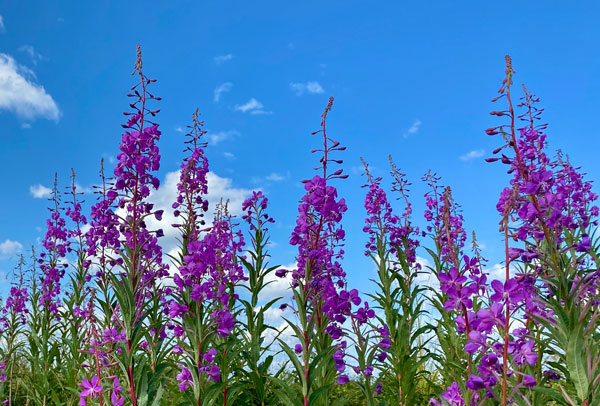
Demystifying trauma-informed teaching
When students enter the classroom, they come with a backpack of experiences – some positive and some not so positive. Trauma-informed teaching helps us recognize the societal, systemic, and family impacts on students, including various forms of societal oppression (racism, homophobia, poverty, for example) as well as internal family issues. Trauma can be defined as any experience in which a person’s internal resources are not adequate to cope with external stressors (Hoch, Stewart, Webb, & Wyandt-Hiebert, 2015). Trauma-informed teaching also recognizes students’ strengths and makes space for them to share life experiences, so that they not only heal and represent their best selves in the classroom but also positively contribute to the classroom environment. As Yup’ik Elder Esther Green often explains, “Learning is healing, they happen at the same time.” So what are the ways in which trauma-informed teaching can take place?
Syllabus
A tangible way in which instructors can exhibit trauma-informed attunement is to integrate specific language around trauma-informed teaching and learning components into their course syllabi. The syllabus can include bold statements that acknowledge the diversity of life experiences that students bring to the classroom. A syllabus can also highlight the promotion of a safe learning environment in which students’ lived experiences will be respected. Instructors can provide a list of resources that they have access to as university students, to help them cope but also feel supported without singling them out individually. Faculty might be interested in emerging discussions about cruelty-free syllabi, which dovetails with increasing our efficacy as trauma-informed faculty.
Connecting Students with Services
Some of the things that students struggle with might be better addressed by trained professionals. By connecting students with available resources, faculty and staff help students access professional care and show that they want to see them succeed. To report a concern with a student, contact the UAF Care Team.
Learning the History of a Place
Alaska is an Indigenous place, as Alaska Native people have been living and stewarding these lands for thousands of years. Yet there also is a history of colonization in Alaska and its accompanying traumatic impacts. Education itself has been a source of trauma for many Alaska Native communities. Until recently, much of this history was not integrated into the curriculum at the university level, and thus non-Native faculty, staff, and students were not aware of this history and its impact on present-day circumstances for Alaska Native people. Learning this history is incredibly important, as it helps those who are not familiar better understand and empathize with the experience(s) of Alaska Native peoples. While the experiences of Alaska Native students/people are diverse, there are common threads that many Alaska Native people have experienced. Examples include families split apart when young people were sent to boarding school, often in the lower 48, punishment for speaking their language, and disregard for important cultural practices. These experiences, though many decades ago, have echoes in present-day experiences of systemic racism and continued colonization. These have implications for Alaska Natives and other students of color and can impact their learning and overall feelings of connectedness and safety while at the university. Faculty and staff can learn more about Alaska Native cultures and history via the Alaska Native Knowledge Network.
Conclusion
Trauma-informed teaching lies on a continuum, as there are continuous advancements being made in the area(s) of what constitutes “trauma-informedness.” It is in the best interest of faculty, staff, and administrators at universities to remain abreast of these changes and advancements as they strive to not only meet the needs of their students and help them to academically succeed but also create an overall environment where students feel safe and valued. For further reference, Education Northwest has created an excellent guide to trauma-informed practices in post-secondary education.
References
Hoch, A., Stewart, D., Webb, K., & Wyandt-Hiebert, M.A.(2015, May). Trauma-informed care on a college campus. Presentation at the annual meeting of the American College Health Association, Orlando, FL.
Jessica Black, PhD, MSW
Assistant Professor
Jessica Black, PhD, MSW, is an assistant professor in the Department of Alaska Native Studies and Rural Development and Tribal Management. Her research focuses on governance, well-being and cultural practices as important protective factors for Alaska Native people.
Diane McEachern, PhD, MSW
Associate Professor
Diane McEachern, PhD, LCSW, MSW, is an associate professor in the College of Rural and Community Development (CRCD) and teaches out of the Kuskokwim Campus in Bethel. Her research interests include the teaching of social work to Indigenous adults and the intersection of mindfulness practice with Indigenous epistemology.




Thanks Jessica and Diane, this is very helpful. The link to “cruelty-free syllabi” is also very useful.
Bravo!!